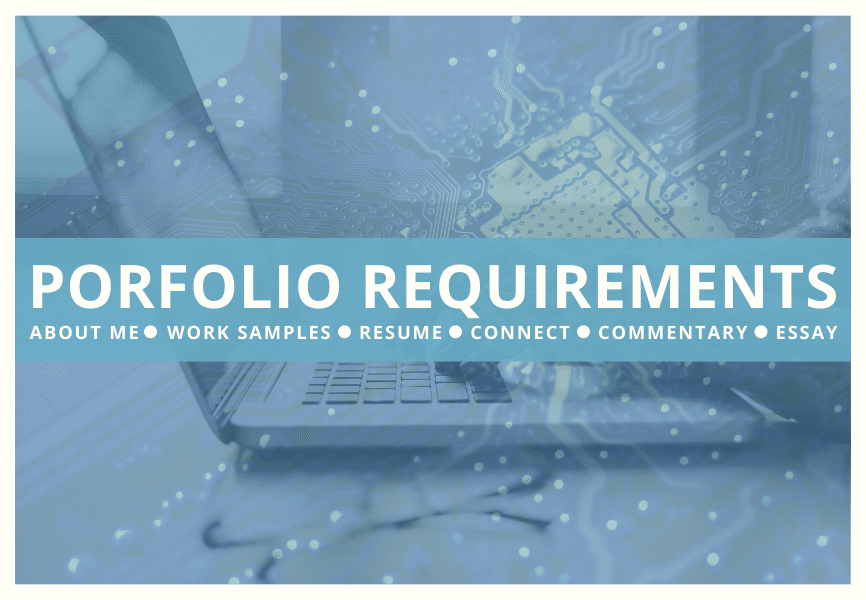With spring quarter approaching, any student graduating in June 2020 must submit their Final Portfolio by the first day of term (March 30, 2020). Submitted via Google Form, these portfolios will be reviewed by the graduate committee, though have an intended professional audience.
The Final Portfolio requirements include:
- An about page
- Samples of Student Work
- CV or Resume
- Contact Information
- Work Sample Commentary
- Reflective Essay
Below, we have collected a series of resources and portfolio samples to help students with each of these requirements. For more information and support, please do not hesitate to reach out to your advisor or MA WRD Director Jason Kalin.
1. About Page
The first requirement for the Final Portfolio is an About Page. Considerations for this page include thinking about where this should live (i.e. Is this your home page or a separate page?), and what should be included. This page is meant to introduce your audience to who you are and what you have to offer. The following resources can help you best sell yourself and your skills!
- The Story of Telling: “10 Rules for Writing a Compelling ‘About Me’ Page”
- DePaul University: “Explore Your Purpose
- DePaul University: “Learning Activities for Purpose Exploration
- SAMPLE: Hannah Thornby’s Mid-Program Portfolio “Home” page
2. Work Samples
The Professional Portfolio must include evidence from 4–6 major projects that you have completed in the MA. Students can also include additional work from outside the program, but must include 4-6 projects situated within WRD courses.This work is meant to showcase your best work that is relevant to your intended career goals and audience. Below find samples from two MAWRD portfolios as well as a portfolio planning activity to help you make meaningful selections.
- MA WRD Portfolio: “Portfolio Planning Activity” (pg. 14)
- PROFESSIONAL WRITING SAMPLE: Ekram Othman’s Professional Portfolio, “Documentation” tab
- TEACHING SAMPLE: Rachel Larrowe’s Mid-Program Portfolio, “Teaching Philosophy” tab
3. CV or Resume
There are multiple ways to display your resume or CV in your portfolio. Regardless of what platform you are using to build your platform (more information about platform affordances here), the following resources can help you think about resume or CV format:
- Squarespace: “Displaying Your Resume on Your Site”
- The Muse: “How to Build a Resume Website That Will Impress Every Hiring Manager Who Sees It”
- SAMPLE: Anthony Melville’s Professional Portfolio, “Resume” tab
4. Contact Information
Crucial to the success of your portfolio are clear calls to action. This can be done with a contact form or simply your email address. Check out some examples below.
- Create Live: “5 Things You Must Include… 5. How to Get In Touch With You”
- SAMPLE: Meg Palmer’s Mid-Program Portfolio “Connect” tab
5. Work Sample Commentary
Interspersed throughout the portfolio, commentary should situate and explain each work sample. WRD recommends and will be assessing based on use of the STAR Method (Situation, Task, Action, Result), and more information about this commentary can be found below.
- Hubspot: “STAR Interview Method: The Ultimate Guide”
- SAMPLE: Kelsey Bolger’s Professional Portfolio, “Content Strategy & Style Guide” tab
6. Reflective Essay
In addition to interspersed commentary that situates your work, when submitting your portfolio, you must also include “reflective essay, of at least 500 words, that situates your portfolio within the intended professional field. The reflective essay should explain how the portfolio is a fitting response to your professional plans. You are encouraged to complete a draft of the reflective essay early in the process and to share it with those well positioned to assist you in planning for your professional goals.”
